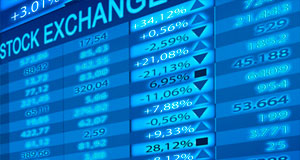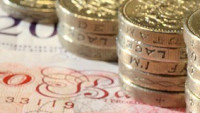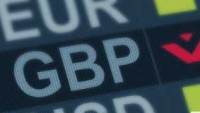 Earlier in the week, there were concerns that easing restrictions caused a jump in the rate of new infections in countries like Germany, but benchmarks finished on a high note at the back end of last week.
Earlier in the week, there were concerns that easing restrictions caused a jump in the rate of new infections in countries like Germany, but benchmarks finished on a high note at the back end of last week.
Many countries have reopened elements of their economies so traders will be closely watching the situation in relation to the possibility of a second wave of the coronavirus. Italy has been one of the worst-hit countries in Europe, but the Covid-19 data posted yesterday was positive. The death rate and the infection rate fell, while the recovery rate increased.
European stock markets suffered some jitters on Friday due to an increase in US-China tensions. The US government will make it more difficult for the Chinese company Huawei, or any group that is connected to it, to purchases semiconductors manufactured by US companies. The change in the exporting rules will require the companies to obtain permission form the US government in order to make the purchases.
The tick up in tensions between the US and China weighed on the US indices for much of Friday’s session. The losses in the middle of the day weren’t huge, and by the close of trading, the equity benchmarks posted small gains. Over the weekend, China’s Ministry of Commerce said it opposed the actions of the Trump administration. There is speculation that Beijing might target US firms like Apple and Qualcomm as way of getting back at the US for the rule change.
Jerome Powell, the head of the Fed, cautioned the US economy might not fully recover until a vaccine has been developed. The central banker also said it might be the end of 2021 before the US has fully recovered from the pandemic. Mr Powell said as long as there isn’t a second wave of the virus, the US economy should steadily recover in the second half of this year.
Traders will be closely watching the latest economic reports to see if the economy is at least improving. The May reading of the New York Fed manufacturing index was -48.5, but keep in mind the April level was -78.2. China has announced post lockdown data that has shown signs of improvement, so dealers will be wondering if western economies will follow in their footsteps.
Overnight it was confirmed that Japan entered a technical recession. In the first quarter of 2020, the economy contracted by 3.4% on an annualised basis, and the reading for the final quarter of 2019 was revised to -7.3%. Stock markets in the Far East are showing modest gains, despite the recession news from Japan. Europe indices are anticipated to open higher.
Broadly speaking, commodities had a good run on Friday. The oil market was helped by the rebound in Chinese industrial production, which saw growth of 3.9% in April, while the March reading was -1.1%. Sentiment in the oil market is turning as last week the EIA report showed the US oil stockpiles fell for the first time since January. There has been talk that OPEC+ are keen to extend their historic production cuts beyond June in an effort to support the price. As economies begin to reopen, it is likely we will see demand for the energy nudge higher.
Amid the uncertainty of the US-China situation, gold ticked up to its highest level since late 2012. The metal was helped by traders’ desire to purchase assets that are deemed to be lower risk. The rally in gold influenced silver as it hit a nine-week high. Platinum and palladium posted gains too, while copper ended the session in the red.
Uncertainty in relation to the EU-UK agreement for when the transition period ends weighed on the pound, and the CMC GBP index fell to a level last seen in late March. Michel Barnier, the EU’s chief negotiator, said divergences remain in relation to what both sides want from the agreement. Mr Barnier said the UK can’t have the best of both worlds. Despite the downbeat tone from the EU side, the UK are still optimistic that a deal can be reached.
Towards the end of last week. Andrew Bailey, the BoE head, said the organisation is not considering negative rates. Over the weekend, the BoE’s Andy Haldane refused to rule out such an option. In light of this, as well as the lack of progress made in regards to a UK-EU post-transition period deal, the pound is likely to remain weak
EUR/USD – has been range bound recently and a break below the 1.0768 area should pave the way for 1.0636 to be tested. A move higher from here might run into resistance at 1.1000.
GBP/USD – has lacked direction recently, but while it holds below the 50-day moving average at 1.2326, the bias should remain to the downside, and it might target 1.2000. The 200-day moving average at 1.2651 might act as resistance.
EUR/GBP – while it holds above the 100-day moving average at 0.8671, the bias might remain to the upside, and 0.9000 might act as resistance. A break below 0.8671 might pave the way for 0.8600 to be tested.
USD/JPY – has been pushing lower since March and a break below 106.00 might see it target 104.00. 108.24, the 200-day moving average, might act as resistance.
__________________













